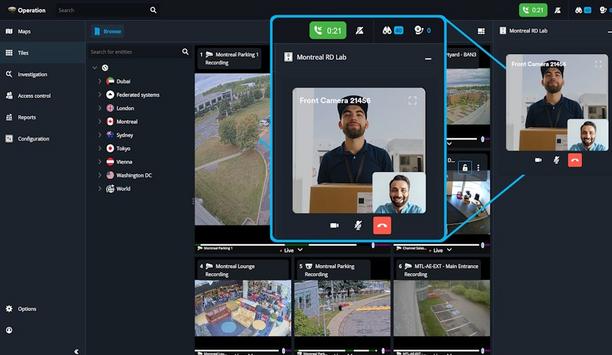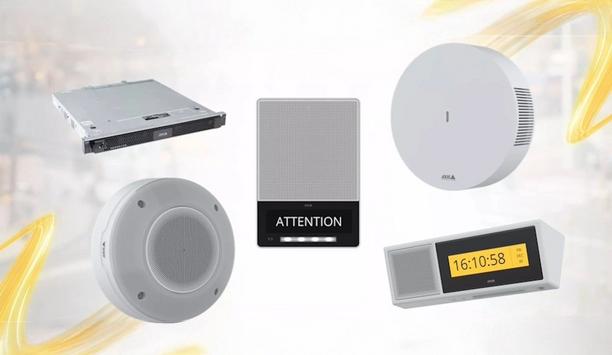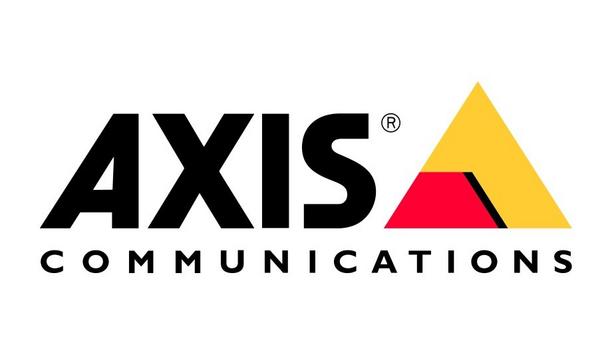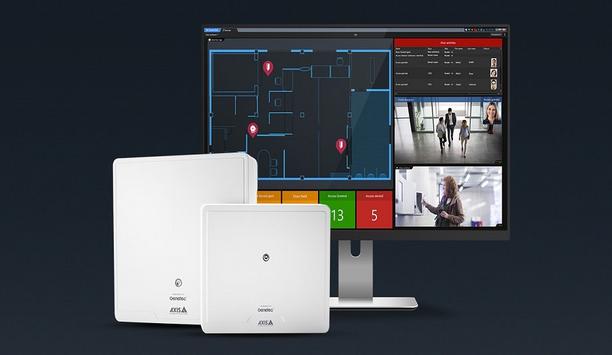Fredrik Nilsson

Fredrik Nilsson
Vice President of the Americas, Axis CommunicationsFredrik Nilsson is Vice President of the Americas for Axis Communications, overseeing the company's operations in North and South America and serving on the global management team. In his more than 25-year career at Axis, he has undertaken various roles in both Sweden and the United States. Since assuming responsibility for the Americas in 2003, revenues have grown from $20M to over $800M. Nilsson has also been instrumental in leading the surveillance industry shift from analog closed-circuit television to network video. Mr. Nilsson has been an active participant in SIA (Security Industry Association) and was on the Board of Directors and Executive Committee for many years. A trusted industry speaker, he has delivered lectures and keynotes at many conferences, including influential shows such as Securing New Ground, ASIS, ISC West, Expo Seguridad, and Interop. In 2016 Mr. Nilsson received the prestigious George R. Lippert Memorial Award presented to individuals for their long-term service to SIA and the security industry, the impact of their efforts on behalf of SIA and the industry, as well as their integrity, leadership, and diplomacy in industry dealings. Mr. Nilsson was inducted into the Security Sales & Integration Industry Hall of Fame in 2017 which recognizes those who have left an indelible impression on the security industry and transformed it into the thriving business of today through qualities including leadership, innovation, achievement, humanitarianism, and integrity. An oft-quoted source for top business newspapers such as The New York Times, USA Today, The Washington Post, and Svenska Dagbladet, he has also contributed articles and quotes to numerous professional security and IT publications both in the United States and abroad. Mr. Nilsson has made guest appearances on CNN, CNBC, Fox News, and NECN. He is the author of the book, "Intelligent Network Video," published by CRC Press, now available in its second edition. Mr. Nilsson currently sits on the Board of Directors for MSAB, the global leader in mobile forensic technology for extraction, analysis, and management. Prior to Axis, Mr. Nilsson served as a product manager for ABB, a global leader in power and automation technologies. A graduate of the Lund Institute of Technology, he holds a master's degree in electrical engineering and postgraduate studies in economics.
IP video surveillance, surveillance transmission, VMS software, video analytics
Round table contributions
Future-proofing your skillset is about embracing continuous learning and developing a versatile set of competencies that remain valuable regardless of technological shifts or industry changes. In the...
The security marketplace has its share of buzzwords, which are words or phrases that become popular and widely used in a specific industry. Buzzwords can be useful for conveying complex ideas quickly,...
When it comes to protecting the environment, the security industry has historically been perched on the sidelines. For instance, the amount of electricity that physical security systems use is minimal...
Technology can be a powerful tool, but it can also be misused. Ethical principles help ensure that technology is used in a way that minimizes risks and avoids causing harm to people or society. Issues...
With the new year well underway, 2023 seems almost like a distant memory. However, a bit of distance might be just the thing to enable us to examine the impact of the year 2023 on the physical securit...
As the new year dawns, it's a good time for the security industry to look ahead to 2024. We asked this week's Expert Panel Roundtable: What will be the biggest surprise for security in the year ahead?...
Physical security is a large market overall, encompassing a range of diverse vertical markets, each with its own set of challenges and opportunities. The success of the security industry overall depen...
According to a report by the U.S. Government Accountability Office (GAO), artificial intelligence (AI) is expected to transform all sectors of society, including national security. The physical securi...
Environmental, social, and corporate governance (ESG) standards in the broader marketplace reflect a growing recognition that business needs to lead the way in addressing a range of environmental and...
With 2023 well underway, it’s a good time to look back on what we learned in the tumultuous previous year. In the security marketplace, there was no shortage of technology developments and a few...
Like any year, 2022 was full of surprises for the physical security industry. Adapting to supply chain shortages, lightning-fast technology development, and changing occupancy patterns in a shifting l...
Connectivity is literally the difference between products operating individually and those combined into a more powerful system. Many of the devices that connect today’s security products reflec...
The topic of video analytics has been talked and written about for decades, and yet is still one of the cutting-edge themes in the physical security industry. Some say yesterday’s analytics syst...
A big trade show, such as the upcoming ISC West, has a lot to offer for attendees. How can attendees maximize the value they get out of ISC West? For advice, we go to our Expert Panel Roundtable, all...
Products are the building blocks of systems and solutions. How those products are combined, and where the integration happens, is a variable in the physical security market. Before the advent of open...
Articles by Fredrik Nilsson
Las Vegas is a city that bombards you with choices: dozens of glitzy hotels and casinos, a plethora of restaurants and eateries to satisfy any craving and an endless variety of entertainment guarantee...
This year has unfolded generally as predicted. Complete solutions have enabled IP video to further penetrate the small to medium business markets. IP convergence opened up new fast-growing markets for...
The top influencing trends in the security industry at ISC West 2017 will be big data, cyber security and the Internet of Things More than a thousand companies will be showing off t...
Currently some retailers operate two separate speaker systems in their stores: one for broadcasting background music and one for announcements Twenty years ago, IP network cameras l...
Though primarily developed for consumer electronic devices, the advantages ofH.265 compression technology make it ideal for the world of physical security Ever since digital video s...
The security industry continued to grow in 2015, although it was a bit slower than expected. Most noticeably, we saw a lot of M&A activity throughout the industry, including our own new ownership...
News mentions
Genetec Inc., the global pioneer in enterprise physical security software, announced the addition of cloud-native audio communications capabilities to Security Center SaaS. Building on more tha...
Axis Communications, the industry pioneer in video surveillance, announced the promotion of Keith D’Sa to Director of Sales, North America. Previously Country Manager for Canada, D’Sa will...
Future-proofing your skillset is about embracing continuous learning and developing a versatile set of competencies that remain valuable regardless of technological shifts or industry changes. In the...
Axis Communications, the industry pioneer in video surveillance, announced a range of new intelligent edge devices and solutions designed to harness the full potential of IoT for enhanced security, bu...
Axis Communications, the pioneer in video surveillance, is proud to announce the continued growth of Axis Cloud Connect as key partners unveil new solutions and integrations at this year’s ISC W...
Axis Communications, the industry pioneer in video surveillance and network devices, announced the implementation of a custom surveillance solution developed in collaboration with the MetLife Stadium...
The security marketplace has its share of buzzwords, which are words or phrases that become popular and widely used in a specific industry. Buzzwords can be useful for conveying complex ideas quickly,...
When it comes to protecting the environment, the security industry has historically been perched on the sidelines. For instance, the amount of electricity that physical security systems use is minimal...
Technology can be a powerful tool, but it can also be misused. Ethical principles help ensure that technology is used in a way that minimizes risks and avoids causing harm to people or society. Issues...
With the new year well underway, 2023 seems almost like a distant memory. However, a bit of distance might be just the thing to enable us to examine the impact of the year 2023 on the physical securit...
Amid a new era of technological development, Fredrik Nilsson, VP, Americas, Axis Communications, in conjunction with Taylor & Francis Group’s CRC Press, has released the timel...
As the new year dawns, it's a good time for the security industry to look ahead to 2024. We asked this week's Expert Panel Roundtable: What will be the biggest surprise for security in the year ahead?...
Axis Communications furthers its dedication to innovating for a smarter, safer world by announcing its latest video technologies at ISC East 2023. 120 new products and solutions As a part of its com...
Physical security is a large market overall, encompassing a range of diverse vertical markets, each with its own set of challenges and opportunities. The success of the security industry overall depen...
Axis Communications, the industry pioneer in video surveillance, gathered with top channel partners at its annual Axis Converge & Connect Conference (ACCC) in Kansas City to share key accomplishme...
According to a report by the U.S. Government Accountability Office (GAO), artificial intelligence (AI) is expected to transform all sectors of society, including national security. The physical securi...
Axis Communications, the provider in video surveillance, announced that the company has reached key supply chain milestones, including over 45% year-over-year increase in Q1 deliveries with continued...
Environmental, social, and corporate governance (ESG) standards in the broader marketplace reflect a growing recognition that business needs to lead the way in addressing a range of environmental and...
Arcules, the provider of unified, intelligent cloud-based video surveillance solutions, has unveiled a new cloud video offering to help organizations modernize their security infrastructures and unl...
Genetec Inc., a technology provider of unified security, public safety, operations, and business intelligence solutions announced a new collaboration with Axis Communications that will see the introdu...
































































